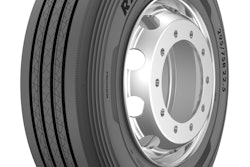The following was published in CCJ's Air Brake Book, 11th edition, sponsored by SilverbackHD. CCJ's Air Brake Book is a complementary industry resource, courtesy of our partnership with SilverbackHD, the Technology and Maintenance Council and Commercial Vehicle Safety Alliance. You can download the entire Air Brake Book here.
Air brakes operate differently from hydraulic brake systems found on automobiles and light- duty trucks. All air brake systems differ somewhat depending on manufacturer design and application-specific options. This chapter will detail the three basic systems of air brakes you should be familiar with before attempting maintenance or replacement work.
 The supply system provides pressurized air that actuates its components, and in many ways is the heart of the air brake system.SilverbackHD
The supply system provides pressurized air that actuates its components, and in many ways is the heart of the air brake system.SilverbackHD
The vehicle’s driver can monitor the air system pressure via a dash-mounted pressure gauge. If pressure in the system falls below 60 psi, a switch in the system must come on and send an electronic signal to a dash light or buzzer in the cab and alert the driver of a problem.
Air in the system is stored in air reservoirs (usually three or more per tractor) until it is needed. Check valves keep pressurized air from passing back through the compressor while it’s not running to make sure the air gets to where it is needed. Should the system become over-pressurized with too much air, “pop-off,” or safety, valves open to allow air to escape before damaging air lines, the reservoirs or other system components.
The air reservoir nearest the compressor is often called the supply tank (sometimes called a “wet” tank), because that is where atmospheric moisture condenses in the greatest quantities. Moisture is the biggest enemy of any air brake system, and great care must be taken to ensure a vehicle has the cleanest and driest air possible circulating through its brake system. To that end, reservoirs are equipped with either automatic or manually actuated drain valves allowing water to be purged from the system.
Air dryers then condense and remove any water not drained from the system by forcing air through a canister containing desiccant material. Prior to air dryers, alcohol sometimes was injected into the air system in cold weather to prevent any water from freezing and clogging air lines, but this practice is strongly discouraged. Alcohol will eat away at rubber components like seals.










